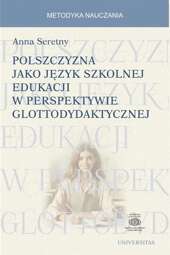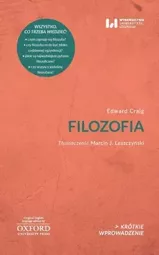Information about a product
| Edition: | 1 |
| Place and year of publication: | Warszawa 2024 |
| Publication language: | polski |
| ISBN/ISSN: | 978-83-235-6378-5 |
| EAN: | 9788323563785 |
| Number of page: | 338 |
| Method of publication: | PDF |
| Size of the file: | 21,8 MB |
| Publication type: | Praca naukowa |
| DOI: | https://doi.org/10.31338/uw.9788323563785 |
Exploring the roots of linguistics – relation, analogy, participation
This book constitutes an attempt to diagnose the basis of linguistic cognition. This diagnosis seems necessary in the face of numerous aporias present in linguistics. An inductive method was used to prepare and present the diagnosis. This method can be presented synthetically as a path from unity to analogical unity. The starting point on this path is the relational nature of being, which determines the internal structure of an individual and the relations realised by individuals within the community.
The relational structure of all being is analogical, which is why all being is said to be analogical (analogia entis). The analogy of being determines not only linguistic cognition, but also linguistics as a scientific discipline. Moreover, the analogy of being necessarily implies transcendental relations in terms of both the community of individuals and the internal structure of each individual.
Since both the individual and the community are real, the transcendental relations constituting them must have a real basis. This basis is not material but substantial. Thus, when linguists make inferences about a community, about the language of this community, or about the communicative behaviour of its participants, they do so precisely thanks to real transcendental relations. Consequently, when inferring about categories, such as the category of similarity, they will not avoid participation.
Keywords: relation, analogy of being (analogia entis), inferring, participation, metalinguistics.
This book constitutes an attempt to diagnose the basis of linguistic cognition. This diagnosis seems necessary in the face of numerous aporias present in linguistics. An inductive method was used to prepare and present the diagnosis. This method can be presented synthetically as a path from unity to analogical unity. The starting point on this path is the relational nature of being, which determines the internal structure of an individual and the relations realised by individuals within the community.
The relational structure of all being is analogical, which is why all being is said to be analogical (analogia entis). The analogy of being determines not only linguistic cognition, but also linguistics as a scientific discipline. Moreover, the analogy of being necessarily implies transcendental relations in terms of both the community of individuals and the internal structure of each individual.
Since both the individual and the community are real, the transcendental relations constituting them must have a real basis. This basis is not material but substantial. Thus, when linguists make inferences about a community, about the language of this community, or about the communicative behaviour of its participants, they do so precisely thanks to real transcendental relations. Consequently, when inferring about categories, such as the category of similarity, they will not avoid participation.
Keywords: relation, analogy of being (analogia entis), inferring, participation, metalinguistics.
Zobacz również

Update Required
To play the media you will need to either update your browser to a recent version or update your Flash plugin.
















